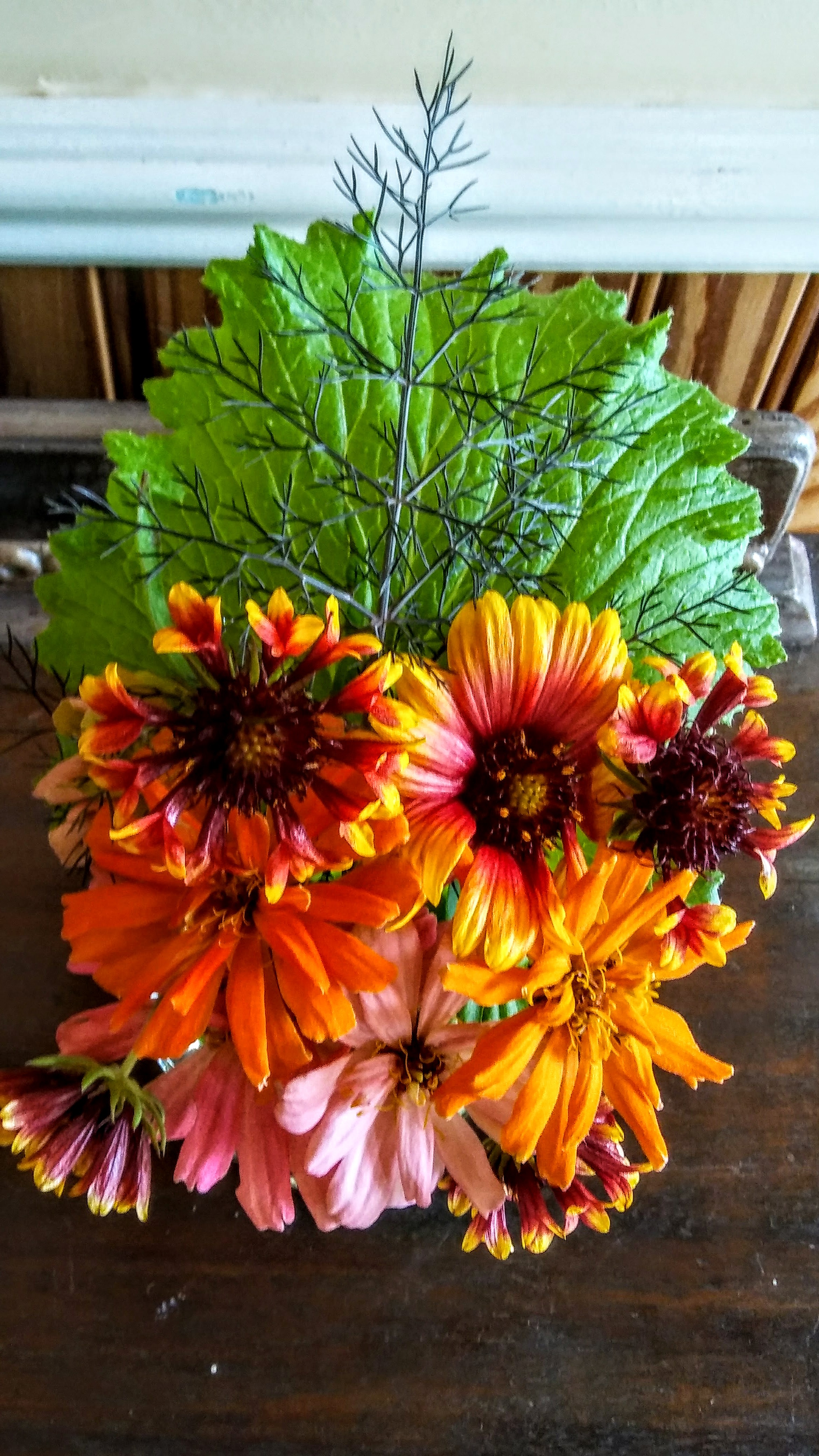
Summer nights in South Florida can be wonderfully fragranced in the garden. I collected a vase of fragrant flowers to scent my house. Frangipani and Gardenia are two of the most popular and have been in my garden for years. I am thinking of adding a night blooming Jasmine.
I learned recently about the origin of the name Frangipani, the yellow flower above. It seems there was an Italian nobleman named Frangipani who made gloves. One of the features of his gloves was their scent, bitter almond. The gloves scent reminded many people of the scent of the Plumeria (Frangipani) and that became its common name. The botanical name, Plumeria, is in honor of King Louis XIV’s botanist, Charles Plumier. Plumier was a monk who traveled the Caribbean collecting tropical plants. Plumerias are native to Central America and the Caribbean. I always thought they were from the South Pacific and Frangipani was a Hawaiian word, not so much.

A closer view:
The yellow flower is Frangipani (Plumeria spp), I wish I knew the variety name, this one is very common around here as a pass along plant and develops into a nice small tree – if you know how to prune them, and I haven’t quite figured that out. Pink flowers are Giant Dianthus, I am expecting these to rollover and die any day now from the heat, but until then I will enjoy them. A chartreuse coleus leaf drapes over the edge of the vase along with Tropical Gardenias (Tabenaemontana diviricata).

A miniature pineapple adds a tropical punch; the white spikes are Sweet Almond Bush (Aloysia virgata), adding more fragrance to the vase. Asian Sword Ferns provide greenery.
No more fun facts from my wonderfully scented house. I actually picked the scented plants because I was cleaning the oven and things were getting smoky. The oven is beautifully clean now and all is well. Visit Cathy at ramblinginthegarden to see more vases.
















